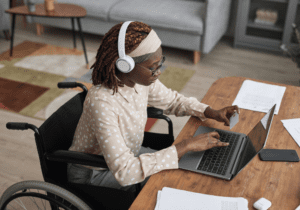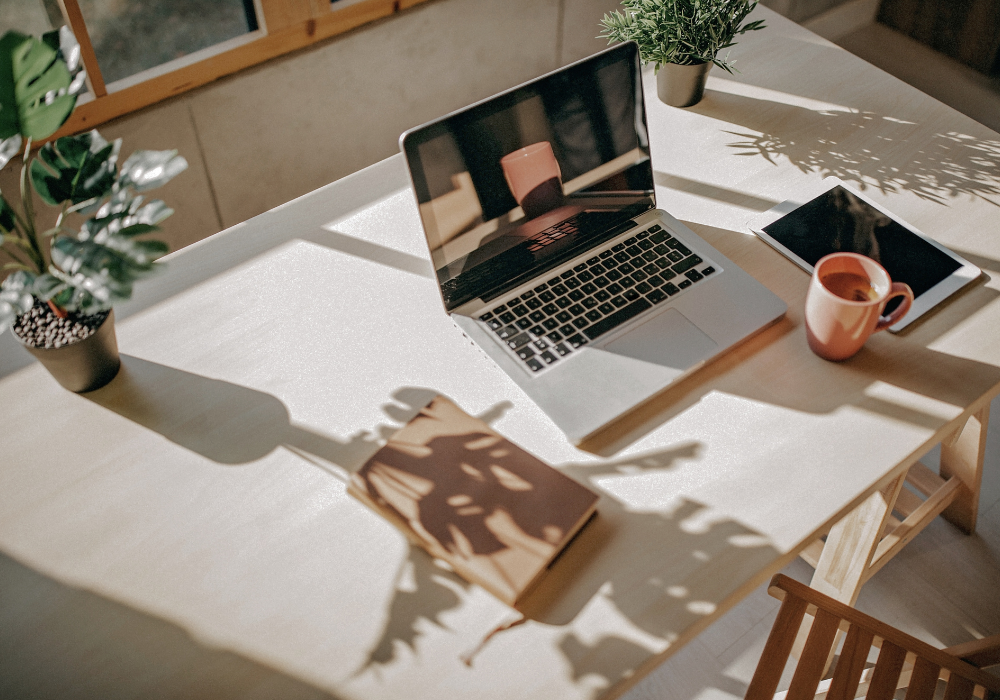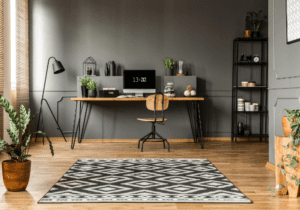Working from home has skyrocketed in popularity. For many homeowners, a dedicated workspace is essential for staying productive and comfortable. In this blog, we’ll explore how to design an effective home office that balances ergonomics, style, and efficiency. From choosing the right furniture to optimizing technology, we’ve got you covered.
 The Importance of a Well-Designed Home Office
The Importance of a Well-Designed Home Office
The world has seen a significant shift towards remote work. A well-designed home office isn’t just a luxury—it’s a necessity. It can dramatically affect your productivity levels, mental well-being, and overall job satisfaction.
Having a designated workspace helps delineate the boundaries between work and personal life. This separation is crucial for maintaining a healthy work-life balance. Also, a thoughtfully designed home office can make your workday more enjoyable and less stressful, leading to increased productivity and creativity.
In this blog, you’ll learn how to transform any space into a functional, stylish, and efficient home office.
Planning Your Workspace
Before you start buying furniture or tech gadgets, consider the layout of your available space. Assess the room’s dimensions and think about where you can best utilize natural light. Privacy is another critical factor; you don’t want to be interrupted by household activities while you’re on an important call.
Natural lighting can work wonders for your mood and productivity. Position your desk near a window if possible. But be mindful of glare—use blinds or curtains to control the light. Privacy can be achieved with room dividers or even a noise-cancelling machine if you’re in a shared space.
By planning your workspace thoughtfully, you set the stage for a more organized and productive environment.
Choosing the Right Furniture
Ergonomic furniture is vital for long hours at your desk. An ergonomic chair supports your back and reduces strain, preventing long-term health issues. Adjustable desks are also a popular choice, allowing you to switch between sitting and standing positions.
When selecting a chair, look for adjustable height and lumbar support. Your desk should have enough space for your computer, documents, and any other essentials. If possible, opt for furniture with built-in storage to keep your workspace clutter-free.
Investing in quality, ergonomic furniture will not only improve your productivity but also contribute to your overall well-being.
Organizing Your Office
An organized office is a productive office. Efficient storage solutions can help you keep your workspace tidy and prevent distractions. Consider using shelves, drawers, and storage bins to store documents, office supplies, and personal items.
Cable management is another crucial aspect of office organization. Use cable ties or a cable management box to keep cords neat and out of sight. This not only improves the aesthetic of your workspace but also reduces the risk of tripping over tangled wires.
A clutter-free environment allows you to focus better, making your workday more productive and less stressful.
 Incorporating Personal Style
Incorporating Personal Style
Your home office should reflect your personal style. This makes the space more inviting and enjoyable to work in. Whether you’re into minimalist decor or vibrant colours, there are plenty of ways to infuse your personality into your workspace.
Consider adding artwork, plants, or decorative items that inspire you. Choose a colour scheme that boosts your mood and complements the rest of your home. Your office should be a place where you feel comfortable and motivated to work.
Incorporating personal style into your home office can make a significant difference in how you feel and perform at work.
Technology and Connectivity
A modern home office should be equipped with the latest technology to ensure seamless connectivity. High-speed internet is a must for video conferencing and large file transfers. Invest in a good quality router and consider using a mesh network to eliminate any dead zones.
Your computer setup should include a reliable laptop or desktop, a monitor for dual-screen efficiency, and accessories like a wireless mouse and keyboard. Don’t forget about software—make sure you have the necessary programs installed for your work tasks.
Optimizing your tech setup can save you time and reduce frustration, allowing you to focus on your work.
Creating a Productive Environment
The right environment can significantly boost your productivity. Plants are a great addition to any workspace as they purify the air and add a touch of nature. Choose low-maintenance plants like succulents or snake plants if you don’t have a green thumb.
Music can also enhance your productivity. Create a playlist of background music that helps you focus. Classical or instrumental music is often the best choice for maintaining concentration.
Lighting is another crucial factor. Use a combination of natural and artificial light to create a well-lit workspace. Consider investing in a desk lamp that offers adjustable brightness settings.
Designing a home office that balances productivity and comfort is essential for modern homeowners. By planning your space, choosing the right furniture, and incorporating personal style, you can create a workspace that not only meets your needs but also enhances your work experience.


 Incorporating Personal Style
Incorporating Personal Style